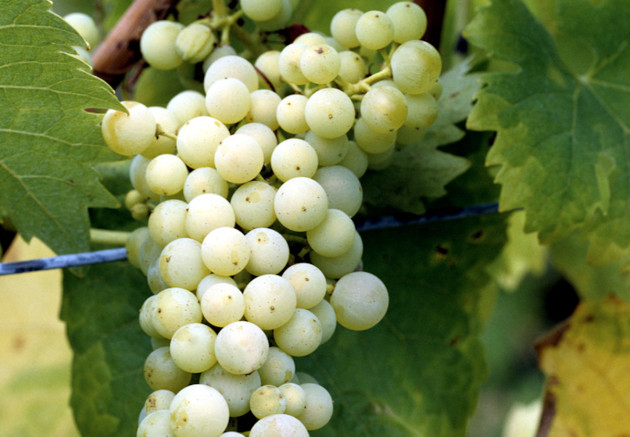
Friday Read: Trebbiano strikes back
Trebbiano. The word sends a shiver down the spine of any self-respecting wine geek – this ubiquitous white grape is about as popular as typhus in snob circles. A sommelier acquaintance of mine (who wishes to remain anonymous) once described Trebbiano Toscano, to use its full moniker, as “Italy's viticultural embarrassment” and other unrepeatable epithets. But are they being a little harsh?
The grape's history is certainly on the ignoble side of the spectrum. Widely cultivated in central Italy and Cognac – under the synonym Ugni Blanc – Trebbiano is responsible for over a third of Italy's total white wine output. This includes, however, clonal variations that boast a little more cachet: Umbria's Trebbiano Spoletino is more highly regarded by critics and buyers. But for most of us, Trebbiano is a shorthand for the “tart mouthwash” (to quote Jancis Robinson MW) that used to define most Italian whites. In the 20th century, Chianti's regulatory framework permitted – and indeed encouraged – a percentage of Trebbiano in the final blend; an example of unnecessary chaptalisation if ever there was one.
Yet Trebbiano is hardly an outlier in this regard: Grenache Noir's reputation was less than stellar in the 1990s, and now look at it. Likewise, there are a growing number of Italian wineries determined to save Trebbiano's global image, coaxing hitherto unseen fruit and depth out of this ugly duckling.
Petrolo’s Boggina B Trebbiano cuvée (around £55) is definitely worth a look. Organically farmed vines yield citrus, stone fruit, and honeysuckle aromas, enriched with a spell in wooden casks – around 15 months – and regular lees stirring during the first three months. I first came across this seductive, fruity little number during a blind tasting in 2019. My notes read: “Northern Rhone perhaps – Hermitage Blanc?” None of the panel guessed we were drinking an Italian white: Trebbiano no less!
Chianti Classico producer Ricasoli is also dedicated to the Trebbiano revival cause. A new addition to their portfolio is Castello di Brolio Sanbarnaba: 100% Trebbiano that is subject to skin-contact vinification in terracotta amphorae, before maturation for one year; 40% in amphorae, 30% in stainless steel, and the remaining 30% in used (two or three-year-old) oak barrels, followed by 10 months in bottle. Again, you'd scarcely recognise this wine as Trebbiano – there's plenty of funk on the nose and tangy, vibrant fruit supported by ripe acidity that enlivens the finish. According to Ricasoli, just 5,600 bottles and five magnums of Sanbarnaba 2020 were bottled on 20 November 2021.
“Just as we did for Sangiovese, for which we undertook an extensive and lengthy research project – studies of our soils, vineyard mapping, and clonal selection – Trebbiano has been the focus of intensive research at Ricasoli over the past 10 years, including non-traditional vinifications,” says Francesco Ricasoli.
Nevertheless, I point out that many critics still deride Trebbiano Toscana as a ‘workhorse grape’.
He responds: “Personally, I believe that the reputation of Trebbiano has now changed. There are some great examples in Italy, outside Tuscany as well. I think of the excellent Trebbiano d'Abruzzo, for instance, produced using this grape variety, and we are certainly not the first to venture into making a 100% Trebbiano wine.
“We are so convinced of the potential of this grape variety that we gave our new wine the same name as our first wine, 'Castello di Brolio.' We added Sanbarnaba as a tribute to the patron saint of farmers (San Barnaba), traditionally believed to protect against hailstorms.”
One of the major problems with Trebbiano is its excessive vigour – an antipodean winemaker once described the predilection toward massive yields as “prolific as cops in a doughnut factory.” So clonal selection is vital if a decent white is sought, as is judicious pruning.
“I don't think there is a 'one size fits all' recipe when making high-quality Trebbiano,” says Ricasoli. “In our case, we have worked on every detail: from selecting clones of old Trebbiano vines, working on a vineyard situated on well-draining sandy soils at an elevation of around 450 meters above sea level, to careful and respectful viticulture. We have thus crafted a Trebbiano-based white wine with significant potential for further ageing.”
In neighbouring Umbria, Chiara Lungarotti believes that it's time to put our misconceptions over this maligned grape to bed.
“Thanks to modern cultivation techniques first and then vinification techniques, and to lower yields per plant, Trebbiano is now making pleasant, fresh, and contemporary wines, just as the market demands today,” she says.
“At the moment, Trebbiano Toscano contributes 20% of our Torre di Giano blend and its Riserva version – Torre di Giano Vigna il Pino (Bianco di Torgiano DOC) – and is the basis of young wines such as Cadetto.”
Of course, we're a long way from achieving critical mass: much Trebbiano Toscano remains a muchness. At its worst, it is dilute, acidic and utterly charmless. But Ricasoli, Petrolo, and others are now charging high(ish) sums for their premium Trebbiano wines – unthinkable 20 years ago. What the grape needed was a few innovators with enough capital – and interest – to prove us all wrong; niche labels that can really thrive in specialist retailers and the on-trade.
Enter Italy's pioneering wine families. And where they lead, others will hopefully follow.




